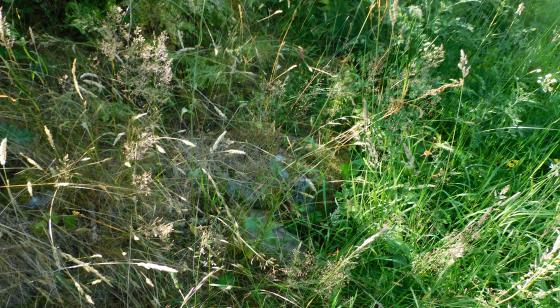
Someone sends you a gift of a tea towel.

Someone sends you a gift of a tea towel.

The last foto of the Jura day, back in 2 years, dry stone dykes to repair.

Looking towards the Mull of Kintyre and the small island of Am Fraoch Eilean (home to the remains of Claig Castle).

Looking straight up.

Behind the trees is Islay and Port Askaig.

Looking south west from near the gate, next to the road.

Looking east.

Looking north.

Looking south, Islay and the the famous MacArthur’s Point Lighthouse.



This is the largest standing stone on the island
Many people would visit the standing stone of Camas an Staca first when they arrive on Jura, we decided to visit it last to leave a stunning impression on the island, to be fair all of Jura is stunning!!
The Camas is a huge standing stone probably put there as a marker to safe nearby landing places to ancient seafarers. It is the biggest standing stone on Jura.
We parked at the large passing place to the north west of the stone beside a wood. Walking back towards Craighouse there is a large deer gate, go through and walk south west. After about 200 meters the standing stone appears from nowhere . A lot of people say the stone is built on a cairn but once again I agree with Canmore and think its field clearance. I’d love to be wrong.
The views are simply stunning as Islay’s steep mid east coast line can be seen, the famous McArthur’s Point Lighthouse gleaming in the distance with the island of Am Froach Eilean in the bay.
So that was Jura, roll on 2020!
Visited 31/7/2018.
Visited 30.7.16
Directions:
Upon arriving on the lovely island of Jura take the A846 (the only road) towards Craighouse. As you start to reach the southern end of the island you will see a wooden sign directing you to the stone on your right (south). You can park near the sign. The top of the stone can just about be seen from the road.
You need to walk back down the road a bit to find the stile to get over the fence. Just to confuse you the sign doesn’t align itself to the stile! (It’s an ‘island thing’ a local told me!)
Once over the stile it is only a short walk but very boggy, particularly near the fence where the ground is at its lowest. It gradually dries out as you get higher. The whole area is covered in chest high ferns. This is of little relevance to the stone which dominates its surroundings. The stone is huge, a real whopper. Given its size and location I would assume it was erected as a marker to be seen by those travelling by boat?
Whatever the reason for its erection it is a very fine stone and well worth visiting if you are lucky enough to be able to visit Arran.
Apart from another Iona-related chapel at Tarbert, much of the settlement activity, old and new, is in the south-east corner of the island, nearest to Islay. Here, the enormous Camas an Staca Standing Stone rises out of the peat twice the height of a man, surrounded by further rocks and outcrops which Canmore (Scotland’s inestimable archaeological database) includes two conflicting and rather confusing accounts of. The feel of the place – the lines of sight and the general atmosphere – gave me a strong feeling that Camas an Staca could be another Callanish under several thousand years of peat deposit, with the single stone still visible the monstrously high centrepiece of something far greater and more impressive. Who knows if an archaeologist may yet have time – and funding – to take a closer look. [Calanais, on the Isle of Lewis, one of the most impressive and largest stone circles and ritual landscapes in the whole of the British Isles, erected around 3000BC, was almost completely buried under 1.5m or so of peat for (at least) 1500 years, only first recorded in the early 17th century, and the peat finally all dug away to reveal it in all its glory in the mid-19th century.
David Kreps blog 2016
“Just a little further on and we moved from history to prehistory at the superbly sited standing stone. This twelve foot high stone goes back 3,000 years before Somerled, to the Bronze Age. Of the men who carried it here we know little. Strangely, it is in Jura that traces of the very first men in Scotland have been found – flint arrowheads uncovered in the sand dating back over 9,000 years. Perhaps the proliferation of the caves, large and small, made Jura a natural island for colonisation by the first shore-dwelling people looking for a place to settle.”
Jura In The Sun, from
Tom Weir’s Scotland, published 1980.
(The) bay of (the) projecting rocks; in this case, standing stones.























































